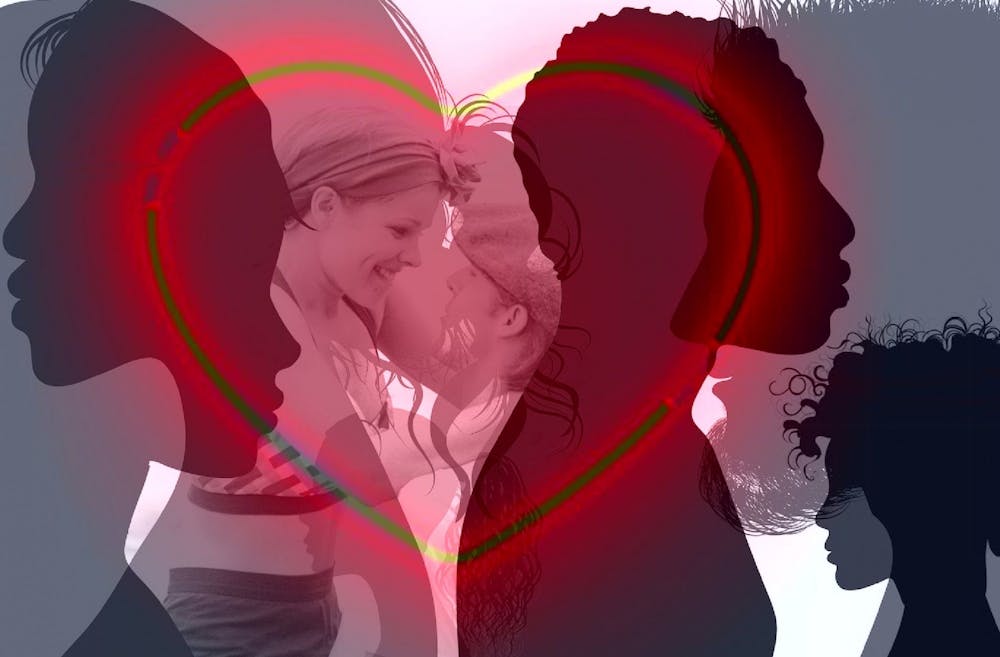13 Going on 30. Clueless. Brokeback Mountain. Love, Actually. 10 Things I Hate About You. Bridget’s Jones Diary. How to Lose a Guy in 10 Days. The Notebook. Call Me by Your Name. What does every classic and iconic romance film have in common—You guessed it!
All of them feature two white leads—and most of the time, two white, cishet leads. Hollywood churns out hundreds of these types of romance movies that continuously focus on white characters and their problems with dating.
Hollywood has always systemically underrepresented BIPOC and—even more so—queer BIPOC people. With tactics like whitewashing and a lack of initiative to hire more BIPOC actors in general, Hollywood is still far behind in adequate representation. The United States is an extremely ethnically diverse country, and Hollywood needs to be producing films that reflect this reality.
It's clear that representation is an issue, but to make matters worse, the relatively recent popular romance films in Hollywood propped up racism, rather than just simply leaving out BIPOC. Some of the rom–com faves are rife with racist stereotypes. Take a look at Sixteen Candles, an iconic romance—it features a character named Long Duk Dong, an Asian foreign exchange student. Dong is introduced when he hits on Samantha at the party, and she gives him a disgusted look. She essentially rejects him, and the sound of a gong rings off.
Dong is a perfect example of how white Hollywood used to cast BIPOC: in this case, underscoring the very specific and racist stereotype that Asian men are perverted and socially inept. For Asian men and Asian women, seeing this type of imaging when you grow up constantly forces you to internalize these stereotypes. The stereotypes say that Asian men are not desirable and that they are creeps who bother white girls.
Another look at a classic is Maid in Manhattan. Jennifer Lopez stars as Marisa Venture, a Latina maid who works in a fancy hotel. She's a single mother in New York, providing for her child and her mother. Not only is she cast with a stereotypical occupation, but she is also presented as a single mother—yet another trope. Even further, the movie basically asserts that she needs to marry a rich, white man in order to lift herself out of poverty.
More recently, when you have popular films that actually feature BIPOC leads such as To All the Boys I’ve Loved Before, BIPOC characters still end up with white characters, and the films always seem to skirt around acknowledging the character’s race. Lara Jean’s Korean mother is completely written out of the story because the writers lazily picked the “dead mother” trope. Lara Jean’s ethnicity is barely explored at all, and it most definitely is not explored in the context of dating as a young Asian woman.
Maybe you’re thinking that all of this isn’t that deep, but it is. BIPOC people deserve to see themselves on the screen in ways that portray them as desirable, lovable, and beautiful. So many children of color struggle to see themselves as worthy of romantic love because of the constant focus on Eurocentric beauty standards. The lack of BIPOC representation in all movies is bad, but the lack of representation in the romance genre is even worse. Members of minority communities are constantly bombarded with “racial dating preferences” and plain racism. There needs to be films that feature BIPOC love and queer BIPOC love. Representation is the key to uplifting BIPOC communities to love their culture, how they look, and, really, who they are.
Despite all of these problems with Hollywood, the film Lovebirds is an example of hope. Lovebirds is about an interracial couple, Leilani and Jilbran, who get caught up in a crime that they didn’t commit and need to prove their innocence. The film starts out with how the couple fell in love, cuts to their constant fighting, and then, ultimately, shows their decision to break up. Although it’s up to you to watch to see if that actually does happen, the film presents such a refreshing, raw, and real view into a relationship.
The beauty of the film, although it doesn't choose to focus on this aspect, is the race of the characters. In contrast to Lara Jean and Peter's relationship, where an Asian girl falls in love with a white boy, this movie doesn't feel the need to include whiteness to maintain comfort. And, although the film is directed by Michael Showalter (a white man), the movie doesn’t attempt to herald the fact that it is a diverse film—it just is one. The relationship is an interracial one, but it is allowed to be nuanced outside of diversity as its defining quality.
Hollywood has always had a problematic past representing race in all of its movies—especially romance ones. Directors need to cast more BIPOC characters. Hollywood needs to produce more films about queer, BIPOC love. There needs to be more BIPOC directors and producers. As more and more films like Lovebirds pop up, we’re on track to that future. Every person deserves to see themselves as the object of another’s affection. Hollywood needs to do its job to uplift BIPOC and showcase their extraordinary love.

